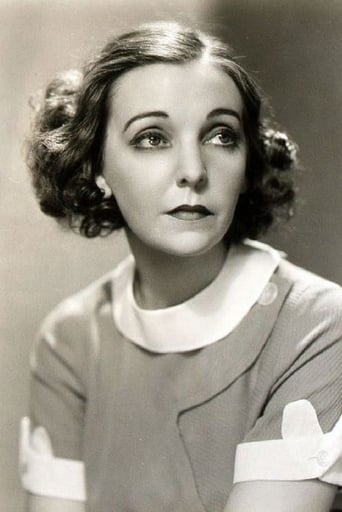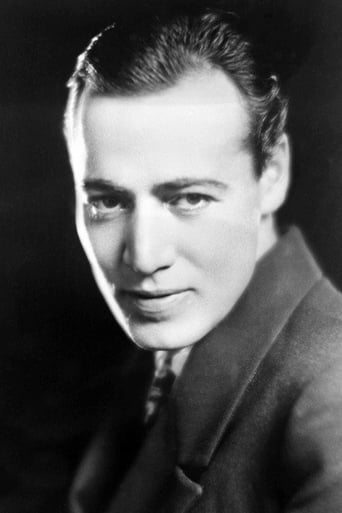Exoticalot
People are voting emotionally.
Sexyloutak
Absolutely the worst movie.
Justina
The film never slows down or bores, plunging from one harrowing sequence to the next.
MartinHafer
The title character, Lazybones (Buck Jones), was named this because he's a ridiculous caricature when it comes to his sleeping all the time and being incredibly lazy. I didn't like this concept, as it just seemed very unreal. However, I did love his character later in the film when he showed he was more than just a one-dimensional guy. While fishing, he sees a woman trying to drown herself in the river (Zasu Pitts). It seems she's feeling desperate--she married a sailor who has since died and she's now stuck with his baby. Her family doesn't know and she anticipates that her nasty mother will reject her and the kid (in an 'I told you so' moment)--hence she threw herself in the river. Lazybones takes pity on her and agrees to take the kid home and raise it himself agrees never to tell anyone who the real mother is. Time passes and the child grows up in a nasty town where the other kids enjoy tormenting her because of her lowly birth. But despite this, she is a nice kid and grows to be a lovely woman. However, Lazybones doesn't see this transformation, as he's off in the war and when he returns he sees her in all her glory. He almost instantly falls in love with her (which is icky considering that he raised her) and plans on asking for her to marry him. But another man, much younger, has already won her heart and nice 'ol Lazybones is left with his unrequited love.The film is very lovingly filmed and the director (Frank Borzage) did a great job with the material. The acting, likewise, was quite good. I just couldn't get past how one-dimensional some of the characters seemed (not just Lazybones but Pitts' mother) as well as the creepy notion of a guy wanting to marry a girl he raised. Still, it is a nice little film...if a bit odd.
kidboots
Even in this early lyrical rural romance, a charming reworking of "Silas Marner", there are many Borzage magical moments. Being at the same studio (Fox) as Murnau, Borzage was often overshadowed by him and his movies were often dismissed as candy box romances by the critics. A reassessment of Borzage's films has shown his harmony of narrative and emotional sincerity were carefully planned and not just accidental.Steve Tuttle (Buck Jones) is the local "Lazybones" - "as slow as molasses in winter" - ridiculed by all the town, except his mother. He loves and is beloved by Agnes (Eva Novak) but her mother (Emily Fitzroy, always the villain) is determined that he shall not be part of their family. One day, while fishing, he rescues a young woman who has thrown herself off the bridge. It is Ruth (Zasu Pitts), Agnes's sister - she is returning home, at her mother's command, so she can marry the local "Beau Brummell", but she is bringing her baby, the result of her marriage to a seaman who has been drowned in an accident. Steve assures Ruth he will take the child home and bring her up and Ruth can return in a few days.Time marches on. Ruth marries Elmer and Agnes fades from the scene - she is just not emotionally and mentally strong enough to stand up to her mother and after telling Steve that he should put the baby in a home, disappears until the very end of the movie. Zasu Pitts gives the film some much needed intensity and her's is easily the best performance in the movie. There is a very poignant scene where Ruth is going by Steve's house in a carriage, Steve holds up baby Kit and waves and Ruth, hesitantly and secretly, waves back. Virginia Marshall, who plays Kit as a child also brings pathos to her role - especially in the tracking shot that follows Kit on her way home from school, being taunted by the other children. Ruth escapes from her husband's ceaseless humbug and comforts the child.War comes and to everyone's surprise, Steve returns a hero. I also found it disturbing and the one false note of the film, that Steve should return with more than fatherly feelings for the now grown up Kit. Fortunately Kit (played by the chocolate box pretty Madge Bellamy) is able to dispel them before it causes embarrassment - she has found love already, with mechanic Dick Ritchie ( a young Leslie Fenton) who has already fixed "that darn gate"!!! I also thought it ended abruptly. A small, harrowing scene where Agne's learns the truth about Kit's parentage but because she is completely under her mother's domination, she will have to keep it a secret forever and a closing scene showing "Lazybones" fishing - indicating that life goes on.Highly, Highly Recommended.
dbdumonteil
"Remind me to fix it tomorrow/when I get back home ".That gate ,along with the incredible last (very short) sequence ,is a comic relief ,without which the viewer would be full of despair."Lazybones" begins as a light comedy: a "good-for-nothin" boy whose nickname is the title of the film ,spends his time fishing in the river or pouring syrup on his pancakes -the opening of the movie is revealing- He's got a fiancée,Agnes ,but both she and his mother ,although they love him,think that there 's nothing they can do to cure his laziness.Steve might be the first of the great heroes Borzagesque,one of those who gave all and asked for nothing in return ;he is a cousin of Tim scrawling in the snow ("Lucky Star") ,of Angela smiling through her tears when she's about to be arrested ("Street Angel") ,of Hans doing anything to make his wife happy ("little man what now?" ) of Louise on her boat saying farewell to her husband ("Big city"),of the Dr Paige ("Green Light")using herself as a guinea pig ,of.... the list is endless.All these characters are ready to sacrifice everything so that the persons they love tenderly will be happy .Steve is a good man from the start.After rescuing a woman ,he receives her baby in his home and all along the story his face seems to say:"don't thank me,everybody would have done the same".And Steve has to fight,like the great Borzagesque heroes ,against a hostile ,nay cruel world: the mother beating her daughter is a very violent scene by the silent era's standards ;the little girl considered the ugly duckling by her schoolmates (the subject of the outcast would be applied again in Borzage's underrated "moonrise" ).But the scenes between "Uncle " Steve and his nephew make it all worthwhile.When she complains the others treat her like a punching bag ,he takes her in his arms and they communicate with their eyes .Few directors show more sympathy and tenderness for their own characters.With "Lazybones",Borzage had invented what the Italians would do long after him: a comedy which turns into a drama.
rogerskarsten
My fellow reviewers have done so much justice to this fine film that I hesitated to submit my own thoughts, since many of them would be quite redundant. I therefore will not comment so much on the story itself in this review, but instead concentrate on some of the aesthetic qualities of the film.The careful attention to period detail is one of the salient features of LAZYBONES. Produced in 1925, but telling a story that reaches back to the turn-of-the-century and advances to "now," it genuinely captures the look of each era it portrays. Often films made in the 1920s but set, say, before the War (WWI), look very different from actual films produced in 1914 -- we can see it in the clothes and the hairstyles. In LAZYBONES this is not the case. Even the characters age believably as the decades advance (only Kit is portrayed by different actresses as she grows up). Buck Jones's transformation from a teenager to an almost middle-aged man is especially noteworthy.Another strength of Borzage's direction is his strong evocation of place. His rural America is steeped in romanticism -- so stylized and yet so personal as to exist both everywhere and nowhere simultaneously. One is left with the feeling that these characters -- especially Steve (Buck Jones) and his mother (Edythe Chapman) -- are inextricably linked with the languid atmosphere of their environment. This quality is also reflected in Borzage's lingering, empathetic close-ups that seem to stretch time beyond its natural bounds. The scene in which Ruth (Zasu Pitts) passes by Steve's house in the carriage, catching a glimpse of her daughter, is one such example. This moment -- consisting of only a few seconds in real time -- is frozen as Borzage focuses on the emotions displayed in the expressions of Ruth, Steve, and Kit (Virginia Marshall). The reunion scene when Steve returns from the war is certainly every bit the equal of the one near the end of Vidor's THE BIG PARADE, and is another prime example of "stretching time" for dramatic effect.In contrast to such Borzage silent masterpieces as 7TH HEAVEN, STREET ANGEL, and LUCKY STAR, I would classify LAZYBONES as a film fundamentally grounded in realism (note the prominent use of real exteriors instead of studio back-lot sets). At the same time, however, Borzage flavors the whole work with a wistful romanticism that is never cloying but somehow manages to capture the dream-like qualities of our own nostalgic memories: snapshot moments, tinged at times with melancholy, at times with happiness.




